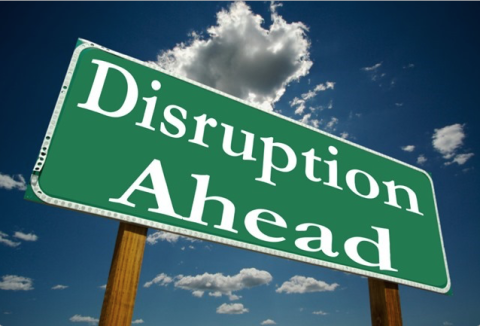Eight Ways to Disrupt the Old Conference Model

Keynotes, educational sessions, breakouts, evening networking events, sleep, rinse and repeat.
Conferences haven’t changed very much in decades, and while event organizers may recognize the need for change, taking that leap and just doing it can be daunting, if not downright scary.
As a result, many events continue to cling to the same-old, same-old format and content, rather than take the risk to implement cutting-edge reforms.
In a recent #Expochat - a Twitter-based conversation on topics related to the trade show industry – a group of industry professionals talked about ways to disrupt the old conference model.
While the goals of a typical conference attendee have pretty much remained the same – to learn what’s new, network with peers, discover fresh ideas, gain actionable takeaways to help improve business and ultimately, learn how to be better at one’s job, like it or not, more and more attendees – especially millennials – have higher expectations from the events they spend their time and money to attend.
What that means for the conference organizer is it’s not just about building content that sells, while helping attendees attain their professional development goals, it’s also about finding new and more compelling ways to deliver that value.
So, what are some ways you shake things up a bit and breathe new life into your educational programming while making the event more engaging and memorable?
Here are a few suggestions:
Know your audience: If you have a clear understanding of your attendees and what they want to get out of your event, then creating programming that resonates with them won’t be a guessing game. Solicit attendee questionnaires before your event, find out what they want to learn about and give it to them by bringing in speakers who can deliver value and engage. In other words, personalize your educational offerings.
Be willing to experiment: Consider implementing shorter, rapid-fire sessions with multiple speakers or a TED Talk-style session format, which opts for 18-minute, to-the-point lectures that deliver a clear, meaningful message and valuable takeaways. For panels, try using a talk show-type format with a roaming mic in audience or a point/counterpoint presentation. But whichever format you choose, encourage speakers to summarize their key points and include time for questions throughout the presentation rather than saving audience interaction for the end.
Tweak your panel discussions: Challenge your panels to engage more with the audience and offer more tangible takeaways. Choose a strong moderator and interesting panelists with unique and varying views to make discussions more interesting, but make sure to focus on solutions rather than controversy. Make sure all parties are prepared and have coordinated their content in advance so they aren’t just winging it.
Bring in fresh perspectives: Conflicting viewpoints are healthy and drive interesting conversations, but oftentimes, fear of offending an audience can lead organizers to opt for safe speakers and panel discussions. While introducing new and controversial ideas and topics can be risky, more and more attendees are longing for real, honest discussions around change and disruption instead of platitudes and reiterations of challenges without new solutions. Even though it’s important to make sure these topics fit your audience and create audience awareness in advance, by featuring speakers and panels with unique or opposing views, you’re sure to facilitate an unforgettable learning experience!
Choose a thought-provoking keynote speaker: Yes, big keynotes speakers are great for bringing in attendees, but just because they’re famous and command a large fee doesn’t mean they’re a good speaker or will deliver a meaningful or relevant message. Draw in public figures if they have something to contribute to the industry topic, not just because you’re hoping to draw in attendance and attract buzz – they need to tell a story that will not only be entertaining, inspiring and meaningful but also provide valuable takeaways. To sum it up, a good event keynote causes the audience to walk out and say ‘wow’ and then discuss in the lobby for 15 or 20 minutes.
Opt for a good storyteller versus a motivational speaker: Motivational speakers may be good for corporate sales meetings, but not necessarily large trade shows or conferences. But if you choose to go that direction, make sure the speaker is delivering an inspiring and/or provocative and personalized message that evokes emotion and delivers critical knowledge rather than just a canned message.
Provide post-session breakout times: After a good and/or controversial keynote or session, many attendees may want to continue the conversation, so consider implementing smaller breakouts to give them the time and space to do so. Helping to facilitate post-keynote discussions can provide attendees with good networking opportunities, as well.
Harness the power of technology: Take advantage of tech engagement tools that enable attendees to get engaged and take control of what they want to learn through platforms that allow you to take the pulse of your audience via crowdsourcing questions and taking polls. While technology can be cool and an incredibly helpful tool when used correctly, it should add to your educational sessions and not just be all flash.
To take part in #Expochat – join in on Wednesdays at 1 p.m. E.T.


Add new comment